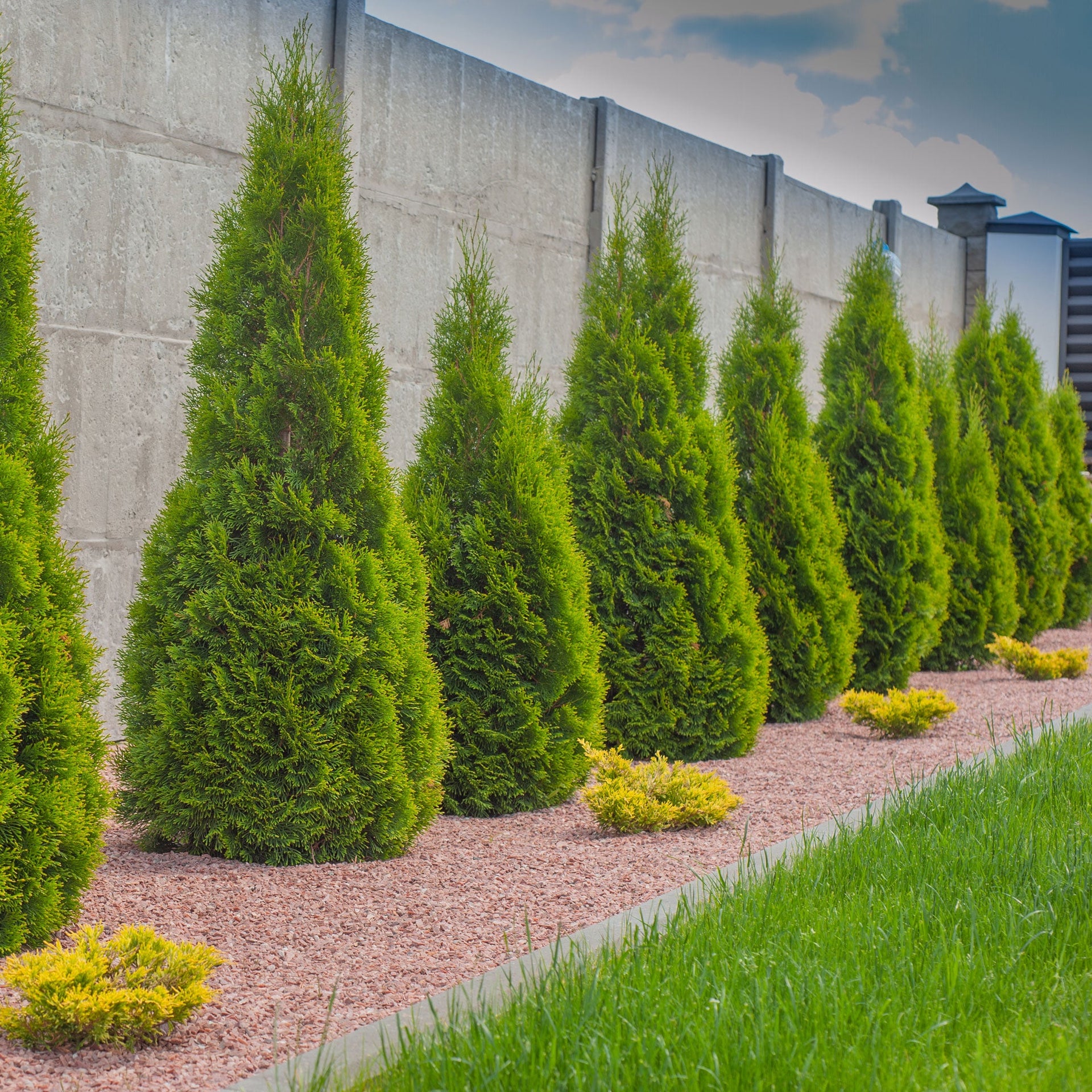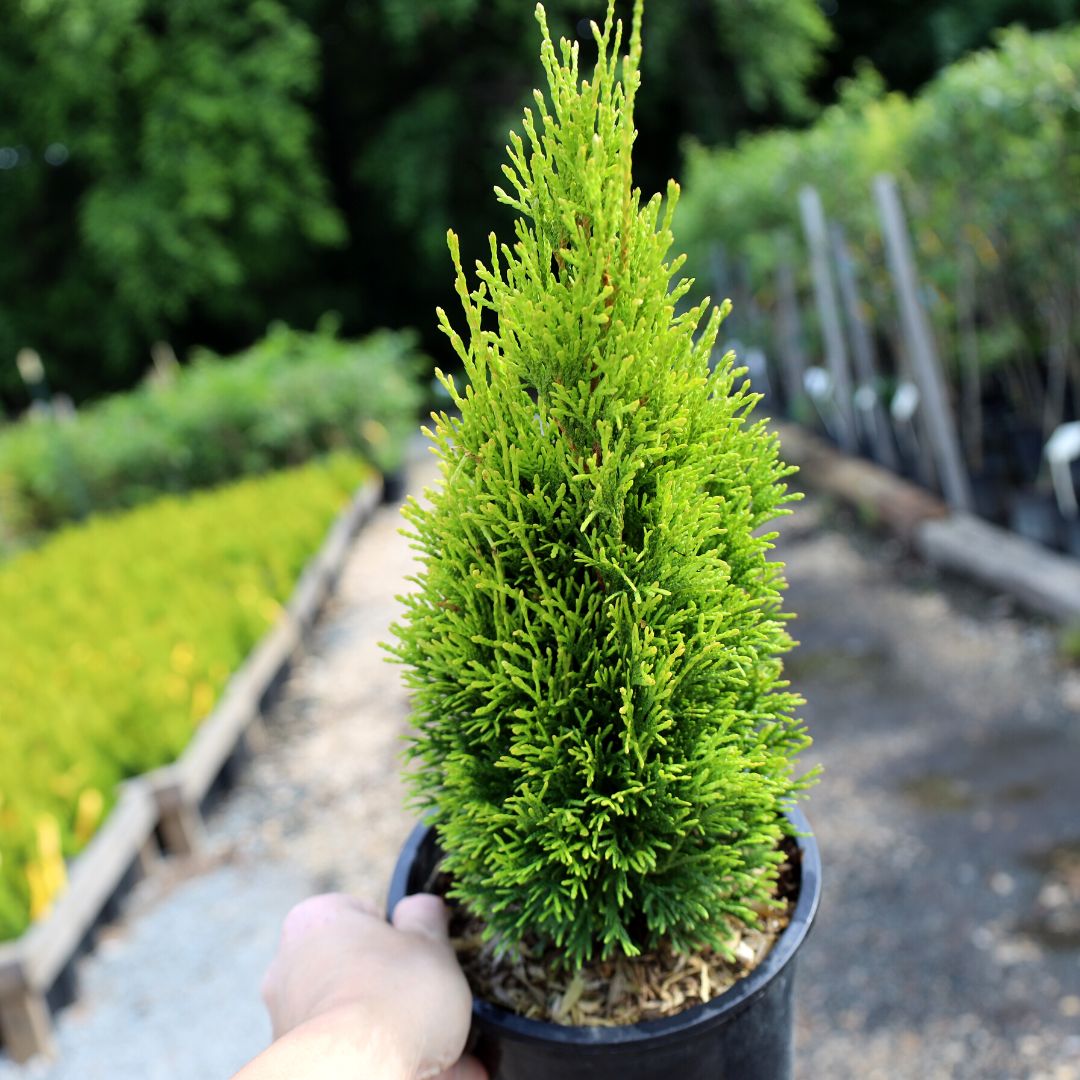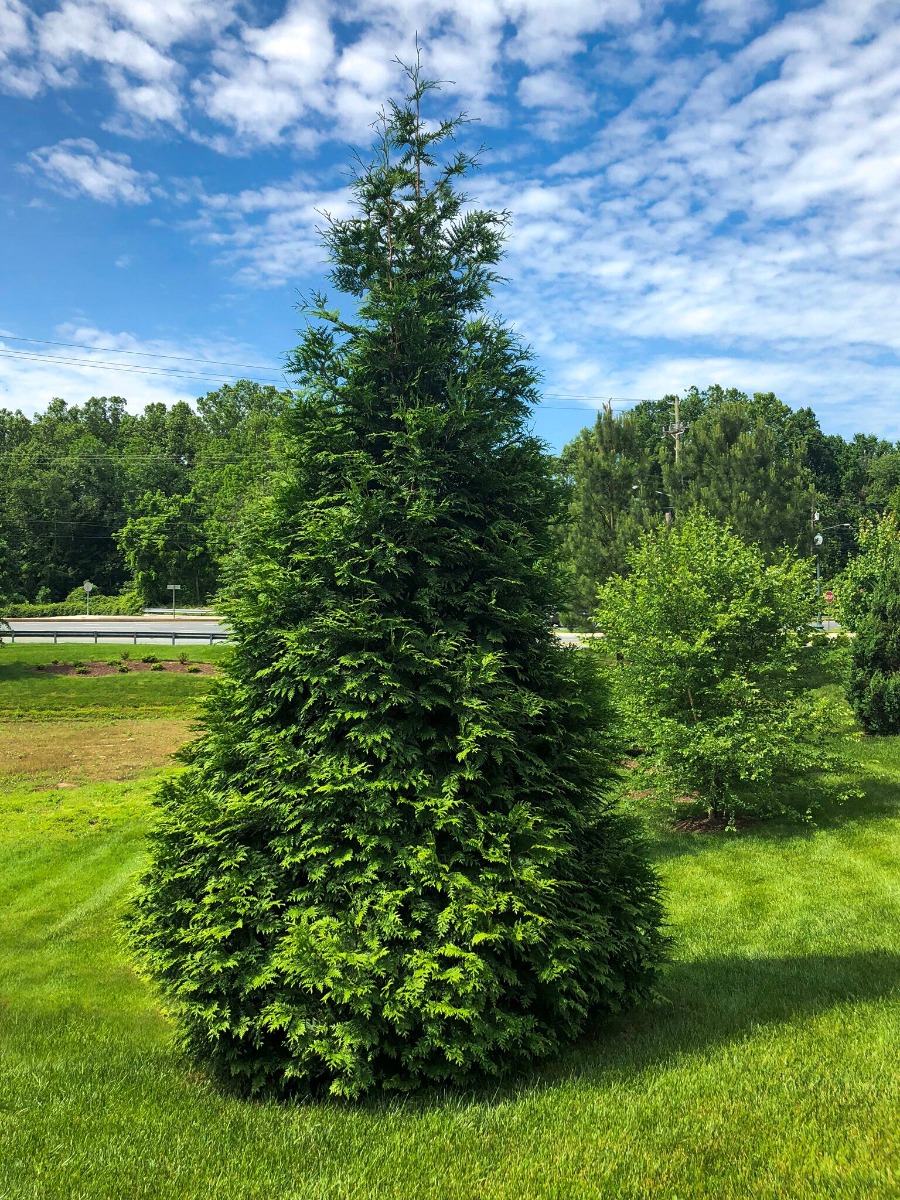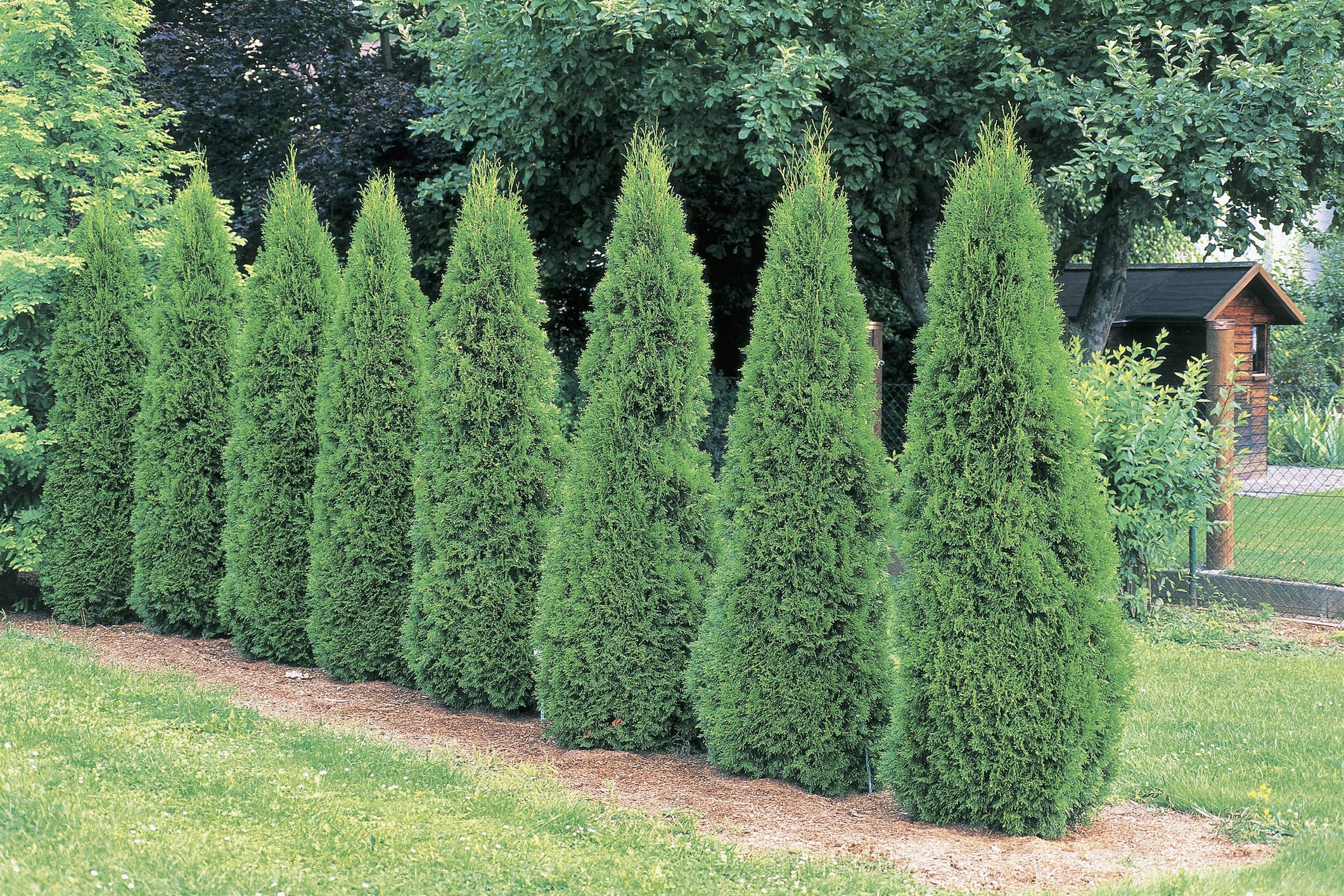Arborvitae: A Versatile Evergreen
Arborvitae, a genus of coniferous trees and shrubs, has long been a popular choice for landscaping due to its versatility, hardiness, and aesthetic appeal. With its evergreen foliage and distinctive pyramidal shape, arborvitae can add year-round beauty and privacy to any outdoor space.

There are several popular types of arborvitae, each with its own unique characteristics:
Green Giant Arborvitae
Description: Known for its rapid growth rate and impressive size, the Green Giant Arborvitae can reach heights of 40-60 feet. Its dense, dark green foliage provides excellent privacy screening.
Emerald Green Arborvitae

Description: This variety is prized for its vibrant emerald green color and compact, pyramidal shape. It is a slow-growing evergreen that is perfect for smaller spaces.
North Pole Arborvitae
Description: The North Pole Arborvitae is a dwarf variety that grows slowly and maintains a compact, conical shape. Its bright green foliage provides year-round color.
Western Red Cedar

Description: This large evergreen tree is native to the Pacific Northwest and is known for its reddish-brown bark and fragrant foliage.
Arborvitae are relatively easy to care for, but there are a few key factors to consider when planting and maintaining them:

Timing: The best time to plant arborvitae is in the spring or fall when the soil is cool and moist.
Pruning: Arborvitae can be pruned to shape and maintain their desired form. It is best to prune them in late winter or early spring.

Arborvitae can be used in a variety of landscape design applications:
Privacy Screens
Plant a row of Green Giant Arborvitae along property lines to create a dense, impenetrable screen.
Foundation Plantings
Accent Plants
Use a single specimen of a larger variety, such as a Green Giant Arborvitae, as a focal point in a landscape.
Container Gardening
Arborvitae are versatile and beautiful plants that can enhance any outdoor space. By understanding their different types, planting requirements, and care needs, you can successfully incorporate these evergreen beauties into your landscape design.
Arborvitae Plant
